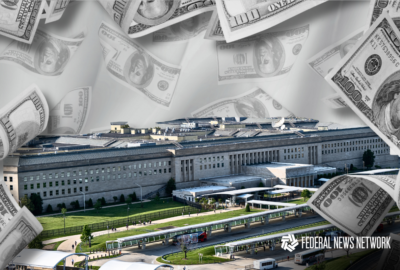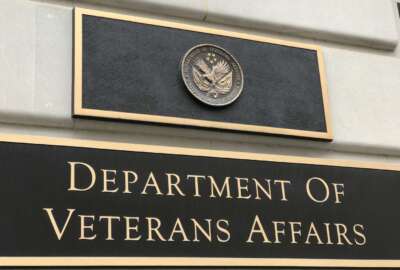VA warns of historic $15B budget shortfall. House committee says more hiring ‘above all’ is driving up costs
The Department of Veterans Affairs’ financial experts tell lawmakers that the historic funding discrepancy is due to increased hiring and pharmaceutical costs.
This story was updated on Thursday, July 18 at 11:04 a.m. to include a statement from VA Press Secretary Terrence Hayes
The Department of Veterans Affairs is telling lawmakers it’s looking at a nearly $15 billion shortfall between now and the end of the next fiscal year.
House VA Committee Chairman Mike Bost (R-Ill.) says chief financial officers from the Veterans Health Administration (VHA) and the Veterans Benefits Administration (VBA) told the committee Monday that they face a $2.88 billion shortfall for the rest of this fiscal year, and a nearly $12 billion shortfall for fiscal 2025.
The VA gets funding for its mandatory health and benefits programs a year before the current fiscal year to avoid any disruption from a government shutdown.
The CFOs, Bost added, attributed the funding discrepancy to increased hiring and pharmaceutical costs.
In a letter to VA Secretary Denis McDonough, Bost said the $15 billion funding gap is the VA’s largest budget shortfall, “and a repudiation of the FY 2025 budget request that the Biden-Harris administration presented just four months ago.”
“Not only have your chief financial officers thrown out the dollar amounts requested for many key accounts, they have abandoned many of the estimates and projections that underpinned their budget. This is not just fiscal mismanagement; it is strategic whiplash,” he wrote.
VA Press Secretary Terrence Hayes confirmed the department’s projected budget deficits in a statement to reporters Thursday morning.
“VA is working closely with Congress and the Office of Management and Budget to resolve these potential shortfalls in a way that prevents any adverse impacts on veterans — and allows us to continue to deliver care and benefits to veterans at record rates,” Hayes said.
The VA, he added, is delivering record levels of health care and benefits to veterans under the 2022 PACT Act, which expanded veterans’ eligibility for VA health care and benefits if they were exposed to toxic substances during their military service.
Since President Joe Biden signed the PACT Act, more than 710,000 veterans have enrolled in VA health care, a more than 34% increase compared to the same period before the legislation.
VBA also expects to break new records this year for the volume of disability benefits claims it’ll pay out to veterans.
“These important results for veterans and survivors exceeded initial expectations,” Hayes said.
The VA, in its FY 2025 budget request, planned to reduce its workforce headcount by 10,000 employees — with most of those jobs coming from VHA.
However, Bost said VHA is now looking at a staffing increase of 22,000 full-time employees over the same period. About 17,000 employees, he added, have already been hired, and VHA is looking to hire another 5,000 employees.
“Hiring quality health care workers is difficult enough without a constantly moving target,” he wrote.
VHA hired more than 61,000 employees last year — its fastest rate of growth in 15 years. The agency grew its total workforce by more than 7% and now has more than 400,000 employees for the first time in its history.
In addition, efforts to boost retention also led to a 20% decrease in turnover between 2022 and 2023.
McDonough told reporters in February that VHA is managing its workforce with a “tighter fiscal picture,” but added that the department is taking a more targeted approach to hiring, after the agency exceeded its hiring targets last year.
“Where we’re not hiring, it’s not because we haven’t been able to hire. It’s because we don’t have a need. Why would we not have a need? Because we just had a great year of hiring,” McDonough said Feb. 26 at a monthly press conference at VA headquarters.
VHA, in some cases, has rescinded tentative and final job offers it made to prospective hires. But the agency ordered a “strategic pause” on rescinding job offers in January, and later issued a memo directing VA health care facilities to only rescind job offers “as an action of last resort.”
VA officials have repeatedly stated the department isn’t under a hiring freeze. However, a lengthy hiring process — even by the federal government’s standards — is frustrating job applicants, especially those who have accepted tentative job offers, but have yet to receive a final job offer.
Under Secretary for Health Shereef Elnahal told VHA employees, in a Feb. 5 email obtained by Federal News Network, that following last year’s record hiring, “we have the nationwide staffing level we need to accomplish this important mission — and we have the funding we need to care for veterans through 2024 and into 2025.”
“As responsible stewards of these funds, we must make thoughtful decisions about resource use at every level of the enterprise,” Elnahal wrote. “This means that we will not be hiring at the same rate we did last year but let me be clear: there is no hiring freeze, we will continue to hire in key areas, and we will do everything in our power to continue supporting our current workforce.”
Bost is asking McDonough if the VA is seeing “significant, unexpected changes in demand for in-house care” since Elnahal’s email to employees. If the agency isn’t seeing a sudden change in demand, he’s asking the department to explain the need for increased staffing.
“Given Under Secretary for Health Elnahal’s announced policy of nationwide hiring restrictions and managing by attrition, I think veterans and employees deserve a much better explanation of where these 22,304 FTE are being hired,” Bost wrote.
Bost said the VA has repeatedly shifted regular expenses out of its base budget and into the Toxic Exposures Fund, which was created under the PACT Act.
“VA’s budget has become increasingly complicated and reliant on gimmicks, apparently to compensate for the expiration of one-time, pandemic-related supplemental funding,” Bost wrote. “This has created a situation where one bad estimate or unanticipated event can create a shortfall in multiple accounts.”
The VA, for example, is seeing an increase in community care costs for veterans to receive health care outside the VA medical system. But Bost said the department isn’t covering those increased costs in its base budget — “seemingly straining, if not breaking, the limits of what the Toxic Exposures Fund can pay for.”
Bost said VA’s compensation and pension costs are running below its budget projects, so far this fiscal year. But VBA typically sees those costs surge at the end of the fiscal year — especially with an increase in claims submitted under the PACT Act.
VBA processed 1.98 million disability benefits claims and issued $163 billion in total benefits in FY 2023. Under Secretary for Benefits Joshua Jacobs recently told reporters that VBA is on pace to process 30% more claims in fiscal 2024 compared to last year.
The agency, so far this year, has awarded $112 billion to veterans and their survivors in compensation and benefits. VBA also recently granted its millionth benefits claim under the PACT Act.
VA told the committee it anticipates a more than $3.8 billion increase in pharmaceutical and prosthetics spending across FY 2024 and 2025.
Bost said VHA’s chief financial officer also suggested that the Change Healthcare ransomware attack may be to blame for some of VA’s budget shortfalls. The ransomware affected many public and private health care systems across the country.
The VA is shifting $700 million in medical collections from this fiscal year to FY 2025 because of the ransomware attack.
Copyright © 2024 Federal News Network. All rights reserved. This website is not intended for users located within the European Economic Area.
Jory Heckman is a reporter at Federal News Network covering U.S. Postal Service, IRS, big data and technology issues.
Follow @jheckmanWFED






